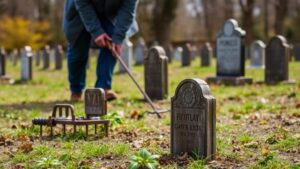Detecting Around Early Ranch Corrals for Lost Tools and Relics
Detecting Around Early Ranch Corrals for Lost Tools and Relics
The search for lost tools and relics from early ranching operations offers a unique glimpse into the historical practices and daily lives of ranchers in the past. Early ranch corrals served not only as enclosures for livestock but also as central hubs for various activities, making them prime locations for detecting enthusiasts. This article delves into best practices for detecting around these historical sites, discusses the types of tools and relics typically found, and provides insights into the historical significance of these artifacts.
Understanding Early Ranch Corrals
Early ranch corrals were constructed primarily in the 19th and early 20th centuries. e structures varied in design based on the geographic location and resources available, typically built using materials such as wood, stone, and, in some cases, barbed wire. Some common characteristics of these corrals include:
- Enclosures made for livestock management.
- Nearby structures such as barns, feed storage, and resting areas for ranch hands.
- Associated trails that led to and from the corrals, often heavily traversed by both humans and animals.
Understanding the layout and operations of these corrals is crucial when embarking on a relic detection project.
Common Tools and Relics Found
Two primary categories of artifacts often discovered around early ranch corrals are tools and personal items. Examples include:
- Tools: This encompasses items such as branding irons, horse gear, fencing tools, and livestock handling equipment. Branding irons, for instance, provide insights into cattle ownership and breeding practices.
- Personal Items: Items like old coins, personal grooming tools, and utensils offer a glimpse into the daily lives and routines of ranch workers and their families.
Research has shown that, according to conducting surveys around former ranch sites, over 60% of detected relics are related to the equipment used in ranching operations. For example, a 2018 archaeology project in Nevada uncovered several brands linked to local ranchers, enhancing the understanding of the ranching culture in that region.
Best Practices for Detecting
When detecting around early ranch corrals, employing a systematic approach maximizes the chance of a successful find. Here are some best practices that should be followed:
- Research Historical Background: Prior to any excavation, study the history of the ranch. Historical maps, photographs, and local archives can provide vital context and lead to more focused digging efforts.
- Use Appropriate Detection Equipment: Metal detectors capable of detecting various metals at different depths are essential. For example, a VLF (Very Low Frequency) detector is often effective for detecting small items like coins.
- Survey the Terrain: Understanding soil composition and topography can guide you to the regions where artifacts are most likely to be found. Generally, areas prone to erosion or close to water sources are fruitful sites.
- Record Findings Meticulously: Document the GPS coordinates of each find, the type of item, and its approximate depth. This can be invaluable for future studies or local history projects.
Real-World Applications
Detecting around early ranch corrals has significant implications for both amateur enthusiasts and professional archaeologists. For example, local historical societies often rely on these findings to organize community events that highlight regional history. In some cases, unearthed artifacts have led to the restoration of local heritage sites, further stimulating interest in local history.
Also, universities often engage in collaborative projects with detecting groups to conduct field surveys. A notable example is the partnership between the University of Wyoming and local detecting clubs, which aims to reconstruct the cultural narratives of early ranching through public engagement and educational initiatives.
Conclusion and Actionable Takeaways
Engaging in detecting around early ranch corrals is not only an opportunity to uncover historical artifacts but also a means of connecting with the regions cultural past. For hobbyists and professionals alike, following best practices can enhance the chances of making significant discoveries while ensuring the integrity of local history is upheld.
- Conduct thorough preliminary research to understand the significance of potential detection sites.
- Invest in quality metal detection equipment tailored for your target items.
- Network with local historical societies to share findings and contribute to broader heritage initiatives.
By approaching this endeavor with respect and thoroughness, enthusiasts can contribute meaningful insights into the rich tapestry of ranching history and heritage.


